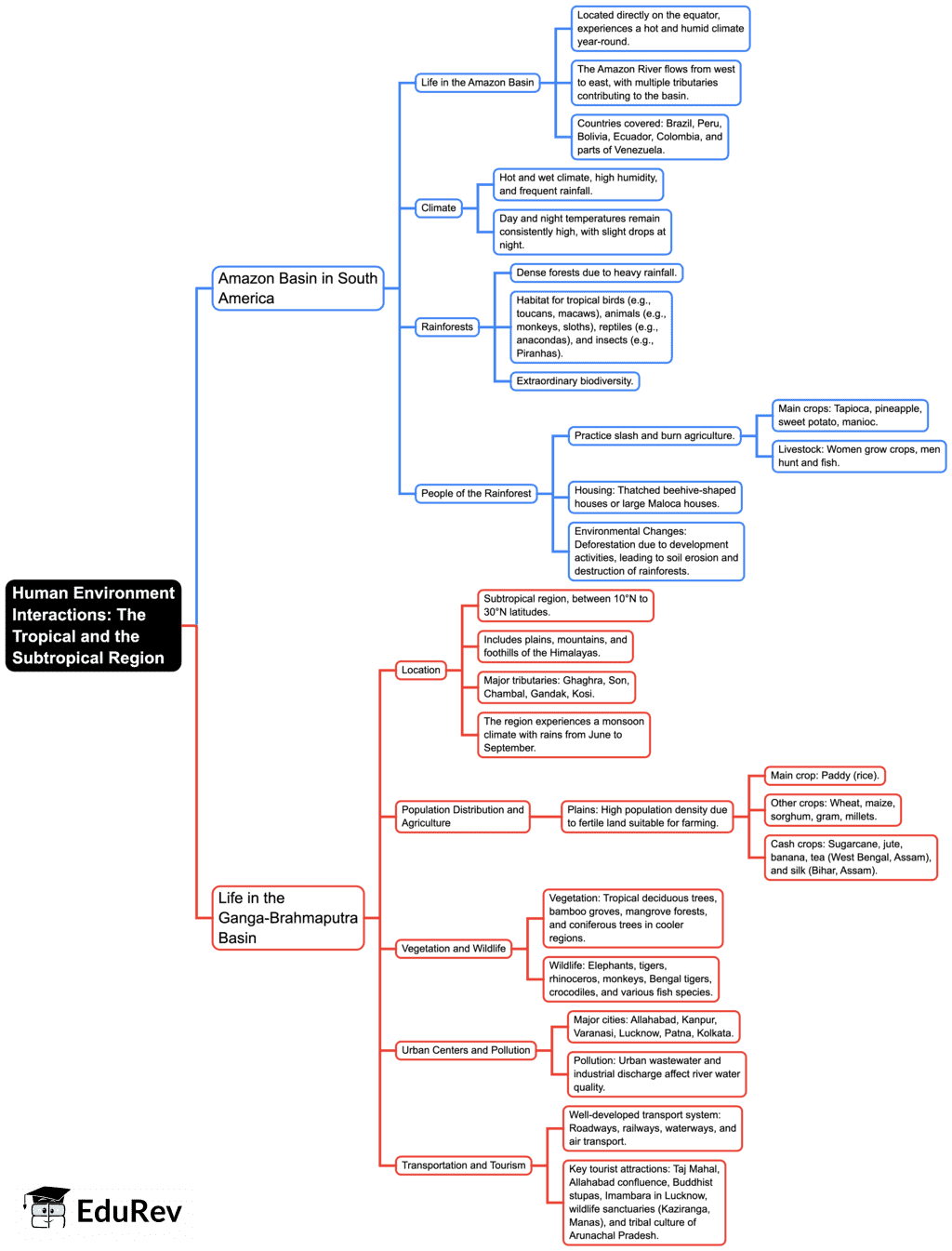Class 7 Exam > Class 7 Notes > Social Studies (SST) Class 7 (Old NCERT) > Mind Map- Human Environment Interactions: The Tropical and the Subtropical Region
Mind Map- Human Environment Interactions: The Tropical and the Subtropical Region | Social Studies (SST) Class 7 (Old NCERT) PDF Download

The document Mind Map- Human Environment Interactions: The Tropical and the Subtropical Region | Social Studies (SST) Class 7 (Old NCERT) is a part of the Class 7 Course Social Studies (SST) Class 7 (Old NCERT).
All you need of Class 7 at this link: Class 7
|
63 videos|371 docs|46 tests
|
FAQs on Mind Map- Human Environment Interactions: The Tropical and the Subtropical Region - Social Studies (SST) Class 7 (Old NCERT)
| 1. What are the key characteristics of the tropical and subtropical regions? |  |
Ans. The tropical region is characterized by a warm climate with high humidity and abundant rainfall throughout the year, leading to the growth of dense rainforests. In contrast, the subtropical region experiences hot summers and mild winters, with less rainfall than the tropics, often resulting in diverse vegetation such as grasslands, scrublands, and some forests.
| 2. How do human activities impact the environment in tropical and subtropical regions? |  |
Ans. Human activities such as deforestation, agriculture, and urbanization significantly impact the environments in both regions. In tropical areas, deforestation for timber and agriculture leads to habitat loss and biodiversity decline. In subtropical regions, overgrazing and urban expansion can cause soil degradation and water scarcity, affecting local ecosystems.
| 3. What are some examples of biodiversity found in the tropical and subtropical regions? |  |
Ans. Tropical regions boast a rich biodiversity, including species like jaguars, orangutans, and countless bird and insect species. Subtropical regions host diverse wildlife such as coyotes, various reptiles, and unique plant species like cacti and palms, reflecting the different climates and habitats found in these areas.
| 4. How do climate and geography influence the livelihoods of people in tropical and subtropical regions? |  |
Ans. In tropical regions, the warm climate allows for year-round agriculture, with crops like rice, bananas, and cocoa being staples. Conversely, in subtropical regions, the variation in climate leads to seasonal farming, with crops such as citrus fruits and olives thriving. Geography also affects fishing, tourism, and trade opportunities in these areas.
| 5. What measures can be taken to promote sustainable development in tropical and subtropical regions? |  |
Ans. Sustainable development in these regions can be promoted through practices like reforestation, sustainable agriculture, and responsible tourism. Educating communities about conservation, implementing policies that protect ecosystems, and encouraging eco-friendly agricultural techniques can help balance human needs with environmental preservation.
Related Searches
















